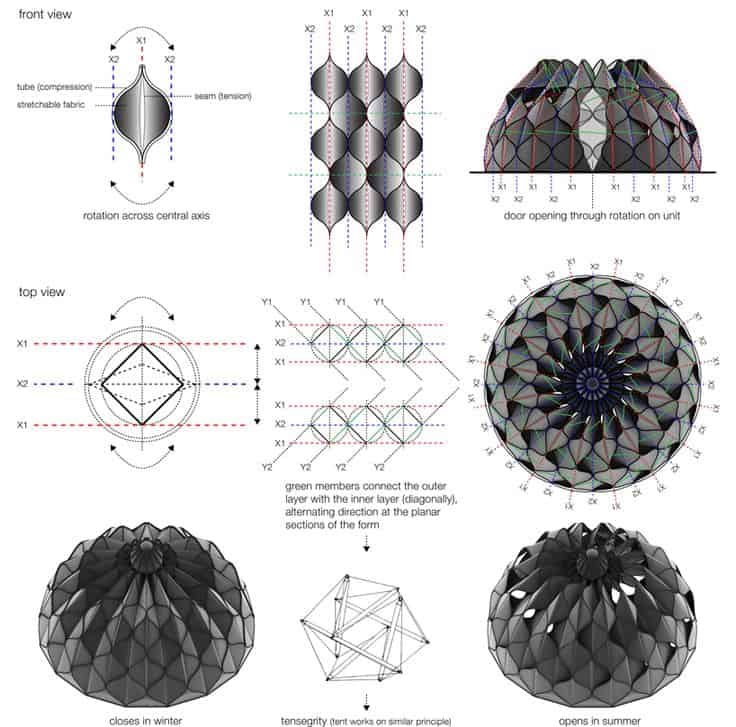They may not be the same as home, but these eco refugee shelters offer some dignity to those in need
By Chere Di Boscio
Over 40 million people around the world are living as refugees, and this number is ever-increasing, thanks to events like the Syrian conflict and Israel’s attacks on Gaza. It’s a mind-boggling figure. And it indicates that today, there’s more urgency than ever before to create comfortable, dignified temporary housing for displaced persons.

Wars in Iraq, Syria, Afghanistan and beyond have meant that millions of human beings need to live in makeshift shelters and tents in foreign lands. These camps often lack sanitation, security and space; life here is often dirty and grim. Luckily, one Jordanian-Canadian architect, Abeer Seikaly, seems to have a solution: eco refugee shelters.
Inspired by Heritage
Currently a resident of Amman, Jordan, where refugees are a common presence, Seikaly is fully aware of their plight. Moreover, she has drawn on her country’s nomadic heritage for inspiration. “The movement of people across the earth led to the discovery of new territories as well as the creation of new communities among strangers forming towns, cities, and nations,” she said in a statement. And the forced movement of people is no exception.
The refugee towns that she proposes comprise structures created from a cleverly folded woven fabric that can expand to create private enclosures (rare in refugee tents), and perhaps most interestingly of all, these ingenious designs allow their dwellers to have their own personal supplies of water and electricity.
Surprising Solar Power
This is possible via a solar-powered skin that absorbs sunlight, which is later converted into usable electricity in a battery stored under the tent. Roofs are equipped with a water storage tank, which carries enough water from rainfall to allow residents a quick shower. Water rises to the storage tank via a thermosiphoning system and a drainage system ensures that the tent is not flooded.
Varying and various climatic conditions have been considered, and the shelters can open up in the summer, allowing the breeze to cross ventilate the space, and they can close up during cold winters, with solar energy stored for heat through the roof panels.
There are also interior storage pockets to allow camp dwellers to put their few belongings somewhere safe and clean. The honeycomb-like design folds up when not in use to allow for easy transportation to wherever the tents are needed. Given all its eco-friendly, practical and humanitarian features, it’s not wonder the project was a winning entry in the 2013 Lexus Design Awards.

These eco refugee shelters are a far cry from replacing their dwellers’ original homes, but they are a vast improvement on the existing tents that are ubiquitous in UN refugee camps–and with continued conflict in the Middle East and climate change destroying the homes of millions around the globe, these innovative domes are sure to be even more essential in the future.
- The Best Reformation Sun Dresses For 2025 - July 22, 2025
- WIN A Pair Of Custom Made Jeans By Sumissura - July 19, 2025
- How To Choose The Best Hairstyle For Your Face - July 7, 2025




